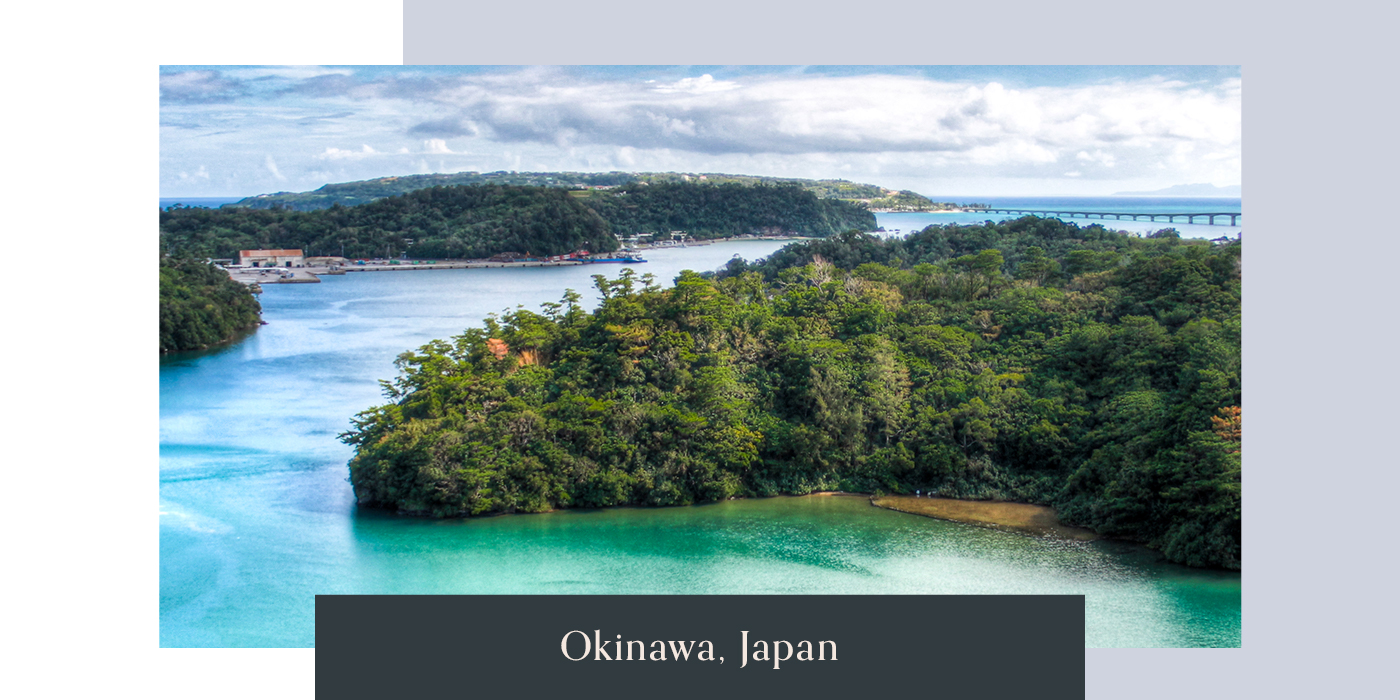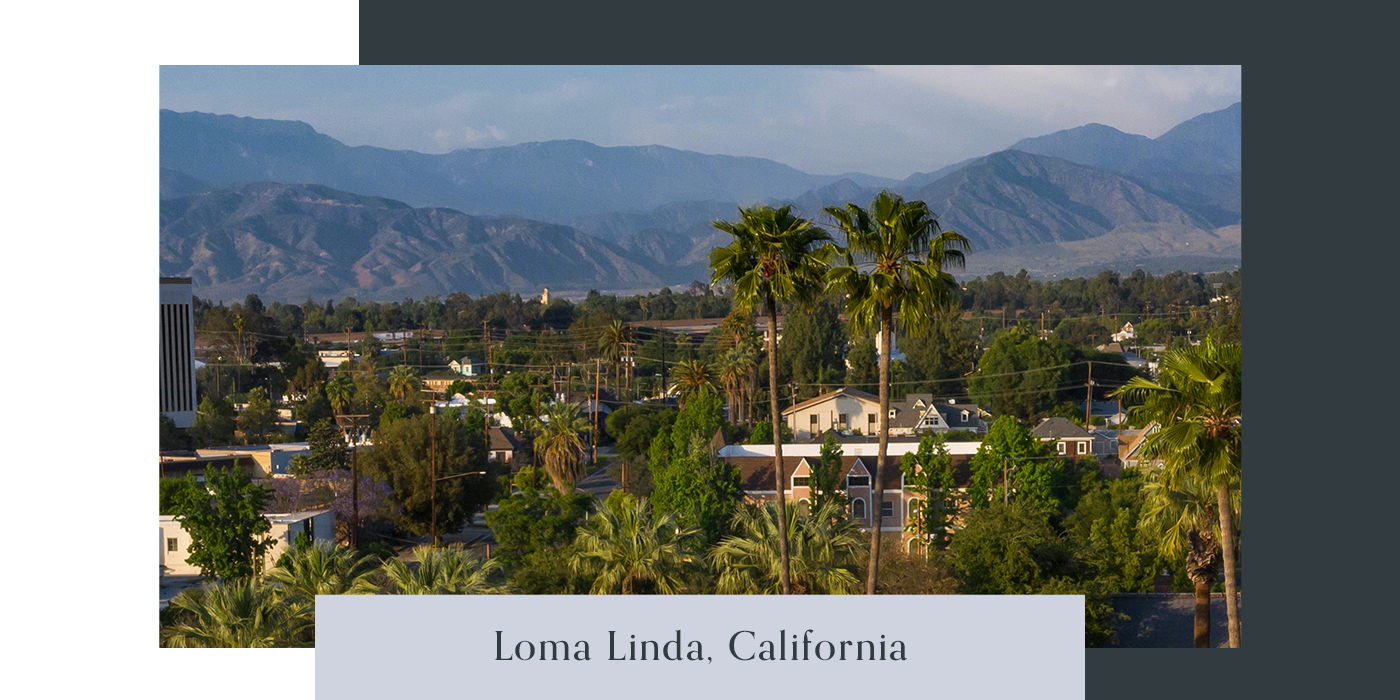What Are the Blue Zones in the World
Imagine living to be over 100 with literally no health problems. You're still able to walk around your neighborhood or work in your garden, your memory is in-tact enough to recall your favorite childhood memories, and you're not taking any medications whatsoever.
That isn't just a dream for some people; it's the norm for those living in five regions in the world—Okinawa, Japan; Sardinia, Italy; Nicoya, Costa Rica; Ikaria, Greece, and Loma Linda, California. In these areas, people not only regularly live into the triple digits, but their minds and bodies are both still working well. National Geographic journalist Dan Buettner has been reporting on these regions extensively for years, dubbing them Blue Zones. He's made it his mission to share what exactly it is about these regions that make them so healthy, so others can adopt their healthy habits—no matter where in the world they live.
There are some characteristics that all Blue Zones share, despite being scattered across the globe and representing a variety of different cultures. For example, having a sense of purpose, minimizing stress, moving throughout the day, and eating plant-based are all commonalities between these communities. But during a recent seminar hosted by the Global Wellness Summit, Buettner revealed that there are differences that set each region apart on the health front, too.
Buettner, along with family medicine physician and pain management expert Robert Agnello, DO (who has also studied Blue Zones), share unique traits about each region and what we can learn from them. Consider this your complete Blue Zones guide to living your best, healthiest (and longest) life.

Okinawa, Japan
Okinawa is the southernmost prefecture of Japan, representing a series of small islands (including Okinawa Island), and is one of the original longevity Blue Zones. "Okinawa, we found, had the highest concentration of female centenarians in the world—about 30 times more than in the U.S.," Buettner says. This is for a variety of reasons, but Dr. Agnello says a key factor is that Okinawan women have a much lower rate of breast cancer than women who live outside of Okinawa. "One reason why is believed to be because of the food there and how it's ultimately expressed in their hormones and genetic expression," Dr. Agnello says.
One such food is tofu, which Dr. Agnello says Okinawans eat regularly—much more than meat, which is the go-to protein here in the U.S. In fact, tofu is incorporated into almost every meal of the day, including for breakfast. It's a well-debunked health myth that tofu is bad for hormonal health (in fact, the phytoestrogens in soy foods like tofu has been found to be protective against hormone-related cancers). However, Dr. Agnello says the tofu eaten in Okinawa typically isn't processed the same way as here in the States, so it's a slightly different product.
"People in Okinawa also consume an herb called otani-watari, which is a type of fern," Dr. Agnello says, adding that it's common to boil this herb and incorporate it into stir-fries, salads, and soups. "They also regularly eat seaweed, which has a compound called astaxanthin," he says, a compound linked to reducing inflammation.
Besides diet, Dr. Agnello points out that older people are typically honored in Japanese society, a stark contrast to the Western obsession with youth. And Okinawans in particular keep strong social connections through moai, which are social groups of friends established during childhood and maintained throughout a person's life. A person's moai provides friendship, support, and even financial help when needed. This connects back to having a strong sense of purpose, family ties, and community, all important pillars of all the Blue Zones.

Sardinia, Italy
Sardinia has 10 times the number of centenarians as in the U.S., and for the most part, people still primarily hunt, fish, and harvest their own foods. Here's something really interesting: Whole grains and dairy are both big parts of the typical diet in Sardinia, two food groups that are often demonized here in the States by many healthy eaters.
"Researchers have found that centenarians in Sardinia have high amounts of a very specific bacteria strain in their digestive systems compared to other populations, lactobacillus," Dr. Agnello says. Any guesses as to where it's found? Starter dough used to make bread. Just like tofu in Okinawa is different than tofu here in the States, bread in Sardinia is different than what we have on store shelves, too. Dr. Agnello explains that bread in Sardinia is typically a sourdough and its starter dough is very rich in gut-healthy bacteria.
The cheese in Sardinia is much less processed than what's the norm in the West, too. Often, it's made with whole sheep's milk or goat's milk rather than cow's milk and is so rich that it only takes a little to be satiated. And it too, has lactobacillus.
Dr. Agnello says there are other characteristics about Sardinia that set it apart, too. It's very mountainous, and walking or biking is the preferred mode of transportation, which undoubtably has long-lasting cardiovascular benefits.

Nicoya Peninsula, Costa Rica
"Nicoya has the lowest rate of middle aged mortality in the world," Buettner said in his presentation. "That means they're reaching age 92 or 93, which is kind of the maximum average life expectancy without heart disease, diabetes, certain types of cancers and dementia, or obesity. They live a long time and stay sharp to the very end."
One food Dr. Agnello says that could be credited to these long, heart healthy lives: corn tortillas. "The way they make corn tortillas in Nicoya, it's a more elaborate process than other parts of the world," he says. "Corn is loaded with vitamins and fiber and in Nicoya, they soak the corn to break it down." What that does, he says, is release niacin, also known as vitamin B3, which is housed inside the kernels' walls and is linked to lowering cholesterol and also preventing cognitive decline.
These vitamin B3-rich corn tortillas are almost always paired with another healthy staple: beans, which are loaded with fiber. "The longevity all-star food is beans," Buettner says. "If you're eating about a cup of beans a day, it's probably worth an extra four years of life expectancy." Dr. Agnello says that when researchers looked at the DNA and RNA of Nicoyans, they found that they had far more telomeres, which are structures that protect the ends of DNA and RNA strands. Longer telomeres are associated with longer healthspans—aka the number of healthy, high-quality years we enjoy—while shorter telomeres are associated with dementia and heart disease.
Nicoya is also known for being the happiest Blue Zone, in large part because of strong community and social ties.

Ikaria, Greece
In his presentation, Buettner said that the rate of cardiovascular disease in Ikaria (also spelled Icaria) is half of what it is in the U.S., and dementia is only one-fifth of the rates here, two very distinct reasons why it so profoundly stood out to him. Just by where it is in the world, you can likely guess what may account for these benefits: Yep, it's ground zero for the Mediterranean diet, the most scientifically researched healthy eating plan. (And one with many benefits for cardiovascular and cognitive health.)
Watch the video below to learn about the foods that make up the Mediterranean diet:
Even if you know the cornerstones of the Mediterranean diet, Dr. Agnello points out something many people miss: It's not just about what you eat. "The base of the Mediterranean diet pyramid is actually about lifestyle," he says. "Not only are the foods on the table important, but who you enjoy your food with is equally important." Other factors not related to food that make up the pyramid's base are staying physically active and having close relationships to family, friends, and community. "This is also very much a culture that respects their elders," Dr. Agnello says.
So yes, eating a diet rich in vegetables, whole grains, fish, and olive oil is definitely a big part of living life like an Ikarian. But so is actually liking the company of who you're enjoying those foods with, too.

Loma Linda, California
Believe it or not, the U.S. is home to one of the Blue Zones. What sets Loma Linda apart from the rest of California, and the country as a whole, is that most people who live there are Seventh-day Adventists, a sect of Christianity that originated in the U.S. in the mid-19th century. As part of their interpretation of Christianity, Seventh-day Adventists typically shun the consumption of meat, alcohol, and caffeine. While red wine can be linked to longevity—and certainly flows freely in Ikaria—too much red wine (or alcohol of any kind for that matter) is linked to actually shortening lifespan. "The health benefits of drinking wine may be overblown because people want to drink it," Dr. Agnello says. Similarly with caffeine, a moderate amount has been found to be healthy.
So what exactly is it about Loma Linda? Dr. Agnello says there's something else about the way of eating (and drinking) in this region that outweighs wine or coffee: it's very simple. "They don't cook with grease or salt and for the most part, their diet consists simply of vegetables, fruit, nuts, and grains," he says.
Their deep-rooted spiritual beliefs likely play a part in their long, health lives, which both connects directly to having a sense of purpose and strong community connections.
When you consider each region and this Blue Zones guide as a whole, the takeaways aren't actually anything complicated at all—and they're certainly not expensive. Eating minimally processed, plant-based foods, staying active, and maintaining good relationships with others are the common threads that weave the benefits together. Put those three simple tips to practice and you can truly go blue, no matter where you live.
Source: https://www.wellandgood.com/blue-zone-guide/

0 Response to "What Are the Blue Zones in the World"
Post a Comment